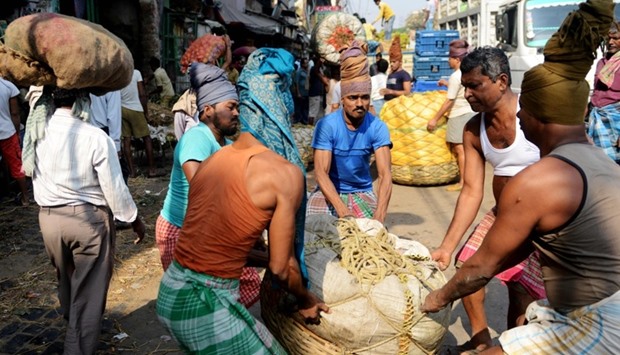Gross domestic product in one of the world's fastest growing economies expanded 7.0 percent year-on-year in the three months to the end of December, down from 7.3 percent in the previous quarter, data published by the central statistics office showed.
While growth came in lower than the previous quarter, it exceeded most analyst predictions in the wake of the government's shock move to remove all 500 (around $7.50) and 1,000 rupee notes from circulation immediately.
Prime Minister Narendra Modi has defended his so-called demonetisation scheme as a necessary strike against corruption and a way of boosting tax revenues by dissuading people from doing business in cash.
But the move triggered massive lines outside banks in the weeks afterwards as authorities struggled to print replacement notes fast enough.
Chief statistician T.C.A Anant said after the data was announced that it was difficult to assess the full impact of demonetisation, which the government had already acknowledged has hit growth.
"Policies like demonetisation are very difficult to assess without a lot of data," Anant told a press conference.
"We will keep evaluating the numbers. I will not like to draw any conclusions at this stage."
Anant said some sectors such as agriculture and mining had in fact performed better than expected in the third quarter.
"The only two sectors in which it is distinctly worse are finance and the real estate category," he added.
The impact on the real estate sector was widely expected as experts say most transactions are either wholly or partly conducted in cash in a bid to avoid paying tax.
Analysts said the data was better than expected.
"It's higher than our expectation. We were expecting 6.5 percent and the actual growth at 7 percent is a pleasant surprise," Sunil Sinha, principal economist at India Ratings & Research, told AFP.
"But when I look at third quarter more carefully, half the quarter, including the festive season when spending is high, was gone by the time demonetisation kicked in," he said in reference to the Diwali holiday.
"Wait and see what happens in the fourth quarter. That'll be a better parameter to judge the impact of demonetisation."
Ashutosh Datar, an economist at IIFL Institutional Equities, also cautioned that the full picture had yet to emerge.
"There will be a downward revision of this as more data comes in over the next few quarters," he told AFP.
The government data came in on the same day as the Organisation for Economic Cooperation and Development released a survey which praised Modi's government for reforms which have spurred growth.
In its report, the OECD said measures such as the implementation of inflation targets and a loosening of foreign direct investment rules, had been major factors behind the growth.
"The pace of reform is quite remarkable," said the report, adding that "about 140 million people have been taken out of poverty in less than 10 years".
But secretary-general Jose Angel Gurria warned that "there is no time for complacency and the main message today is that the reform momentum must be maintained so there can be more inclusive growth."



